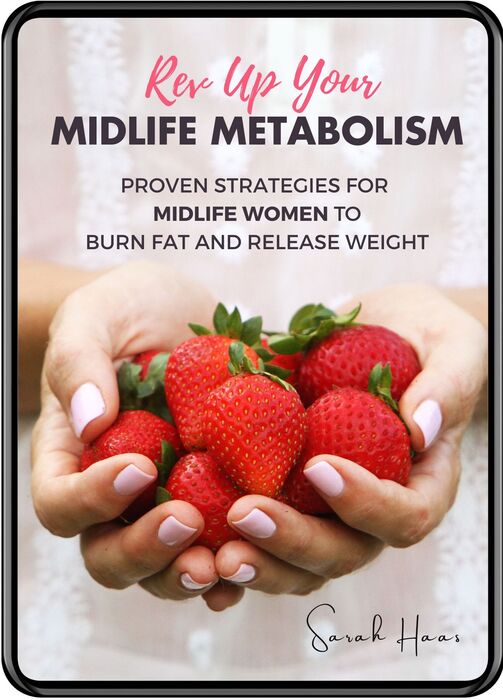
We’ve all been there. Reaching for a bag of chips or some chocolate after a long day. Not because we’re truly hungry, but because we’re exhausted or stressed.
Then feeling guilty for losing control…again…or for not having enough willpower or discipline.
Many of us, especially women, turn to food when we’re dealing with emotions, stress, or simply trying to make ourselves feel better. But most of us aren’t aware of what’s really driving our cravings or how to break the cycle.
By cultivating a compassionate and mindful approach, we can build a more positive, nourishing relationship with both food and ourselves.
What is Emotional Eating?
Emotional eating is when we turn to food to soothe or distract ourselves or as an escape from difficult emotions or situations, rather than eating to satisfy physical hunger.
If you struggle with emotional eating, that doesn’t mean you’re weak or flawed!
It just means that you’re turning to the comfort of food to cope with something. Understanding this and offering ourselves compassion instead of self-criticism is the first step to choosing healthier ways to nurture ourselves.
Why Do We Eat Emotionally?
Life can be overwhelming, and food can provide a sense of comfort and relief. But it’s only temporary and it doesn’t get to the root of what might be going on underneath. Understanding why this is happening can empower you to choose healthier habits.
So many of us turn to food as a way of “stuffing down” unresolved or uncomfortable emotions or to “fill us up” if we’re feeling something is missing.
Here are a few reasons why we might use food to help us cope:
- Stress or Anxiety: Food offers a quick fix to calm our nerves and give us a sense of comfort. Sugar and processed foods especially, can trigger the release of feel-good hormones, giving us a sense of happiness or relaxation. That’s why we often crave the not-so-healthy stuff.
- Sadness or Loneliness: For many of us, food has been a constant companion. If we feel disconnected from others, are dealing with loss or grief, or don’t have the intimate friendships or romantic relationships we long for, food can serve as a way to fill that void.
- Boredom: When there’s a lack of excitement, joy, or creativity in our lives, we often turn to food simply as something to do.
- Fatigue: If you’re tired or drained, your body might crave quick energy through sugary or starchy foods.
- Habit: Your emotions can become so tied to your eating habits that you automatically reach for a treat whenever you’re sad or stressed without even realizing what you’re doing.
Am I an Emotional Eater?
Here are some signs that you’re eating for emotional reasons:
- You eat when you’re not really hungry. You find yourself snacking even though your body isn’t really asking for food. This often happens at night once the day is done and the house gets quiet, or in the afternoon when you’re tired or having a stressful day.
- You eat quickly or mindlessly. Emotional eating often happens on autopilot, where you’re not really paying attention to the food.
- You crave specific comfort foods. Foods like chocolate, chips, or desserts often provide a temporary boost.
- You eat to escape feelings. When uncomfortable emotions come up, food can be an easy distraction or a way to numb out.
- You feel guilty or ashamed afterward. You beat yourself up for giving in to your cravings, which can trigger more emotional eating.
Recognizing these patterns isn’t about criticizing yourself—it’s about understanding why this is happening. Once you become aware, you can begin to make gradual shifts.
5 Tools to Take Back Your Power
With a little self-awareness, compassion, and patience, you can start to find healthier, kinder ways to deal with your emotions. Here are some tips to help you break the cycle:
1. Pause and Check In with Yourself
If you feel an urge to eat when you’re not really hungry, pause for a few minutes, tune in, and listen to what this craving may be trying to tell you.
Ask yourself, Am I truly hungry, or is there something else I’m feeling?
2. Allow Your Emotions
Emotional eating often comes from a place of avoiding uncomfortable feelings. We turn to food to numb or distract ourselves from whatever we don’t feel ready to face.
It can seem scary, but it’s okay to feel all the feels! Emotions are a normal part of being human, and even the tough ones don’t last forever.
Instead of stuffing them down, sit with your feelings for a moment. Take a deep breath and acknowledge them without judgment. Allowing the wave of your emotions to rise, peak, and recede, will allow the energy to release.
3. Find Healthier Alternatives
When the urge to eat hits, consider alternatives that help you cope in healthier ways. Here are some ideas:
- Feeling anxious? Get up and move–dance to your favorite song or take a brisk walk to release that nervous energy.
- Feeling lonely? Call a friend who always makes you feel better, cuddle with your pet, or look through photos of happy memories.
- Feeling exhausted or overwhelmed? Treat yourself to a relaxing bath, sip some calming tea, or wrap yourself in a cozy blanket.
- Feeling bored? Pick up a book or try a new hobby. Get creative. Doing something that brings you joy can help shift your focus away from food.
4. Eat Mindfully
When you do eat, try to make the experience as mindful as possible. Slow down and savor each bite. Emotional eating often happens in a rush, without paying attention to how the food tastes or how your body feels. But by focusing on the experience of eating, you can find joy in your food without overindulging.
5. Build Healthy, Supportive Habits
When you’re physically healthy and emotionally balanced, you’re less likely to turn to food for comfort. Simple habits like getting enough sleep, moving your body, and making time for relaxation can go a long way in managing stress and emotional triggers.
- Exercise regularly: Find a form of movement you enjoy, whether it’s yoga, walking, or dancing. Exercise boosts your mood and helps release stress.
- Prioritize sleep: Aim for 7.5-9 hours of sleep each night to help regulate your hunger and cravings.
- Make time to relax: Give yourself permission to take a break for least 30 minutes each day, whether it’s taking a warm bath, reading, or simply resting in silence.
- Stay connected to others: Spend time with people who uplift and support you. True emotional connections keep you from feeling isolated or lonely.
Overcoming emotional eating isn’t about being perfect–it’s about self-compassion, understanding your needs, and finding healthy, fulfilling ways to bring more joy into your life.
Be kind and patient with yourself. Change takes time. Every small step you take towards self-love and self-care is a step towards healthier habits and a more balanced relationship with food.




